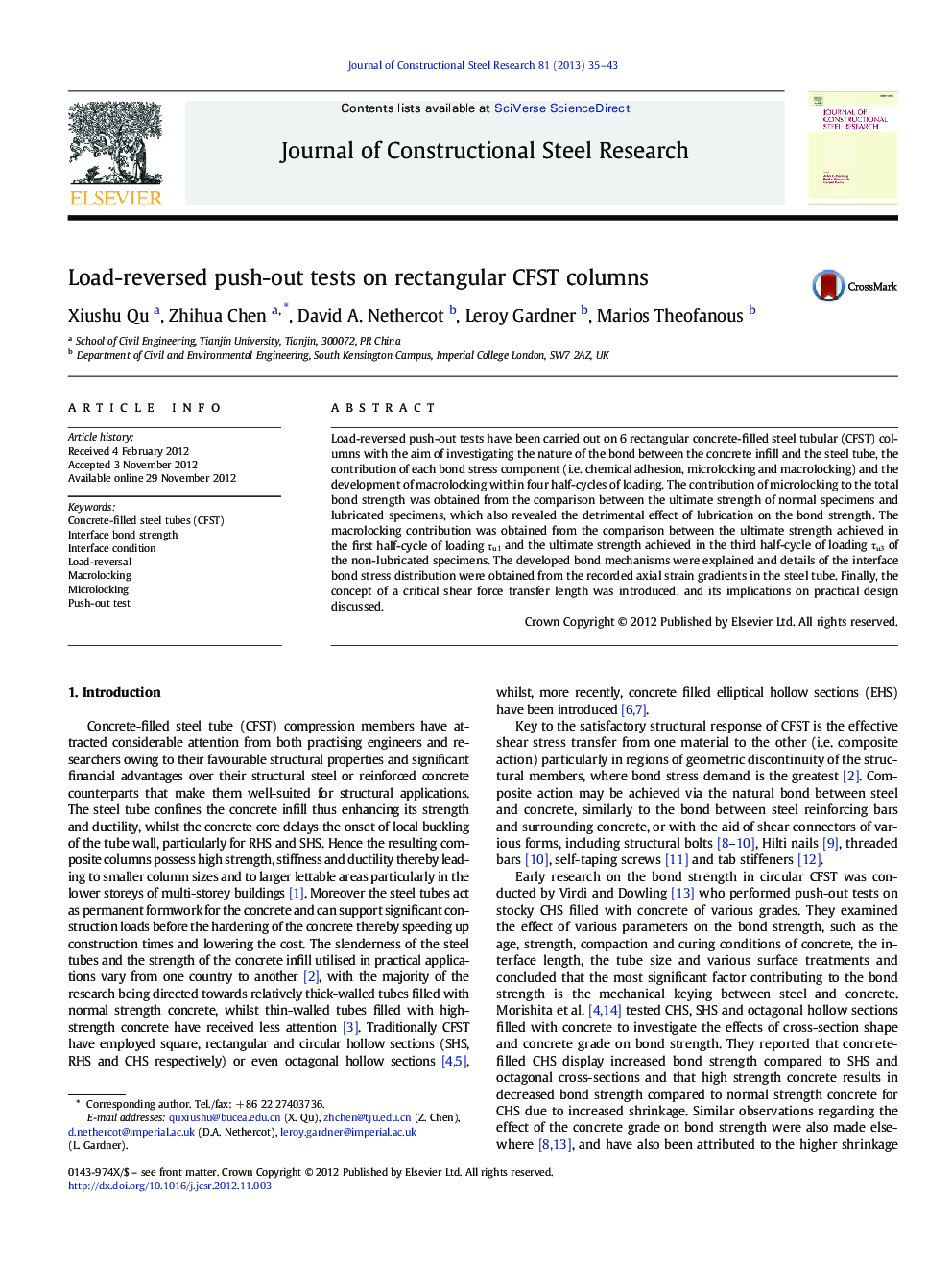| Article ID | Journal | Published Year | Pages | File Type |
|---|---|---|---|---|
| 284943 | Journal of Constructional Steel Research | 2013 | 9 Pages |
Load-reversed push-out tests have been carried out on 6 rectangular concrete-filled steel tubular (CFST) columns with the aim of investigating the nature of the bond between the concrete infill and the steel tube, the contribution of each bond stress component (i.e. chemical adhesion, microlocking and macrolocking) and the development of macrolocking within four half-cycles of loading. The contribution of microlocking to the total bond strength was obtained from the comparison between the ultimate strength of normal specimens and lubricated specimens, which also revealed the detrimental effect of lubrication on the bond strength. The macrolocking contribution was obtained from the comparison between the ultimate strength achieved in the first half-cycle of loading τu1 and the ultimate strength achieved in the third half-cycle of loading τu3 of the non-lubricated specimens. The developed bond mechanisms were explained and details of the interface bond stress distribution were obtained from the recorded axial strain gradients in the steel tube. Finally, the concept of a critical shear force transfer length was introduced, and its implications on practical design discussed.
► Load-reversed push-out tests ► The contribution of each bond stress component ► Details of the interface bond stress distribution
